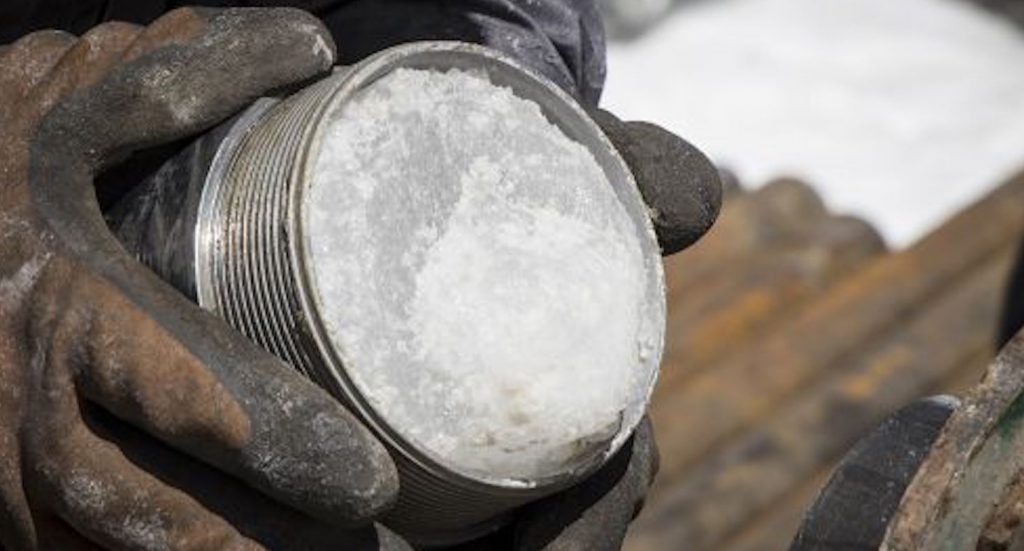The Ice Memory project, aiming at creating a global ice archive to support climate research, has scored a new milestone with the drilling campaign at Calderone, the southernmost glacier in Europe, located on the Gran Sasso mountain. The mission was organized by the Institute of Polar Science of the National Research Council (ISP-CNR) and by Ca’ Foscari University of Venice, in collaboration with National Institute of Geophysics and Volcanology (INGV), University of Padova and the companies Georicerche and Engeoneering.
During the campaign, the first ice core was drilled from Calderone, the last remaining glacier in the Apennines. Scientists will carry out chemical analyses on the sample in order to gain information about the environmental and climate history of the mountain and surrounding regions.

The expedition lasted 12 days. It was made possible thanks to the collaboration of the National Fire and Rescue Service which provided helicopters and personnel from the departments of Pescara and Roma Ciampino to reach the glacier at the foot of Corno Grande, at more than 2,600 metres above sea level. The Erickson S-64 Air Crane helicopter of the National Fire and Rescue Service had a decisive role in the campaign: a true flying crane able to lift heavy loads, which transported the core drilling machine, weighing 4,500 kg, to Calderone.
“The drilling was quite difficult,” said Jacopo Gabrieli, ISP-CNR researcher and field coordinator of the mission, “both because of the weather conditions which were often bad, and because the ice was ‘plasticky’, that is, extremely hot and soaked in water, and the drill bit would be blocked and could not carve the surface. Under a sheet of debris, we found ice that was increasingly ‘clean’ but different from the ice of Alpine glaciers because of the peculiar thermal conditions of the various strata. With specific in-lab studies, we will attempt to define its characteristics and acquire chemical and isotopic information, if they are available”.
The preliminary survey that the researchers had carried out in preparation for the core drilling using a georadar had revealed the clearest “photograph” ever taken of the depths of the Calderoneglacier.
“This mission was a real challenge. We did not know what we would find in the depths of Calderone, which loses about one metre of ice thickness every year”, said Carlo Barbante, ISP-CNR director, professor at Ca’ Foscari University of Venice and one of the founders of the Ice Memory programme. “The ice core extracted seems to have all the right characteristics for us to draw important information regarding the climate and environmental history of central Italy and of the entire Mediterranean area. A truly unique environmental archive that at first glance already shows very interesting glaciological characteristics.”
Once the analysis of the samples has been completed and the conservation of the stratigraphy and climate and environmental traces has been verified, the ice core will be made available to the Ice Memory international programme and transferred to the storage site at Dome C, in Antarctica.
The Ice Memory international research project, acknowledged by UNESCO, aims to collect and preserve, in the depths of Antarctica, ice samples extracted from glaciers around the world which may disappear or retreat significantly due to climate change. Italy is one of the project coordinators through the National Research Council and Ca’ Foscari University of Venice, together with Fondation Université Grenoble Alpes (FR). The project brings together the French National Centre for Scientific Research (CNRS), the French National Research Institute for Sustainable Development (IRD-France), the French Polar Institute (IPEV) and the Italian National Antarctic Research Programme (PNRA).

